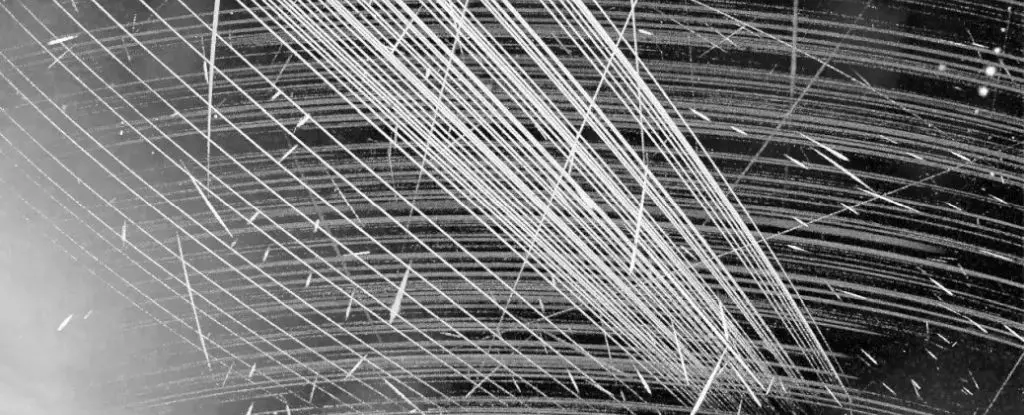In recent years, the increasing deployment of satellite swarms in low Earth orbit has introduced a troubling phenomenon: the emission of unwanted electromagnetic radiation that poses significant challenges for radio astronomy. The surge in the number of satellites, notably the second-generation Starlink models known as v2mini and v2mini Direct-to-Cell, has raised alarms. Recent findings reveal that these newer satellites emit radiation levels up to 32 times higher than their predecessors, creating a cacophony of radio waves that interferes with sensitive astronomical observations.
The implications of this radiation leakage extend beyond mere inconvenience for scientists. Specific frequency bands are protected for radio astronomy, and violations in these spectrums endanger our ability to explore the cosmos effectively. The pressing concerns surrounding satellite emissions underline a critical turning point in how we engage with and regulate the burgeoning satellite industry.
As of the latest reports, there are approximately 6,398 satellites in orbit, a number that continues to swell with SpaceX’s consistent launches of roughly 40 satellites each week. This rampant increase in satellite presence is not just an issue of visible light pollution marked by streaks across our night skies. Recent analyses using the LOw Frequency ARray (LOFAR), a sophisticated network of radio antennas across Europe, have revealed alarming data about the emission of radio waves outside the designated frequency range.
Scientists, such as Cees Bassa from the Netherlands Institute for Radio Astronomy (ASTRON), have reported that emissions from the latest Starlink satellites are significantly brighter than those emitted by earlier models. To put this into perspective, the unintended radiation from these satellites is said to be 10 million times more intense than the faintest astrophysical signals, akin to comparing bright moonlight to twinkling stars. This stark contrast places immense pressure on radio astronomers who rely on stable frequency bands to capture critical cosmic phenomena.
Despite the evident concerns regarding radiation leakage and its potential implications for scientific research, the landscape of regulation remains alarmingly sparse. Current regulatory frameworks do not adequately address the problem of unintended electromagnetic emissions. This void raises questions about how we can sustainably manage the coexistence of advanced communication technologies and vital observational science.
In light of this, researchers advocate for the implementation of regulations that mandate more stringent monitoring and control of satellite emissions. The argument is straightforward: as the number of satellites increases, so will the cumulative brightness of these emissions, which could ultimately drown out the faint signals from distant cosmic sources. This proactive approach is not only critical for preserving the integrity of radio astronomy but is also essential for ensuring that future developments do not come at the expense of our understanding of the universe.
SpaceX, while being a major contributor to the problem, is not alone in this expansive endeavor. Other companies, such as OneWeb and Amazon, are also planning vast constellations of their own. With several thousand satellites on the horizon, industry collaboration in tackling this issue is fundamental. Experts emphasize that the technological prowess of these companies can serve as a significant asset in developing methods to reduce harmful emissions without undermining their operational objectives.
Engineers like Federico Di Vruno from the SKA Observatory stress the importance of creating sustainable policies that prioritize minimizing unintended radiation. Starlink, along with other players in this realm, has an opportunity to take pioneering steps that set industry standards for emissions management. By investing in advanced data analysis aimed at identifying the sources of emissions, companies can collaborate with scientists to devise innovative solutions that mitigate these issues.
Looking Ahead: The Importance of Radio Astronomy
The consequences of neglecting the integrity of radio astronomy extend far beyond individual scientific pursuits. The technologies derived from astrophysical research have transformed our everyday lives, enhancing applications like Wi-Fi connectivity, GPS navigation, and advanced medical imaging. Disruptions to radio astronomy could inadvertently stall advancements critical to societal progress.
As Jessica Dempsey, ASTRON’s general and scientific director, aptly points out, sustained engagement with regulators and the satellite industry is essential to navigate the challenges ahead. The time has come for decisive action to safeguard our cosmic observations and ensure that humanity’s quest for knowledge isn’t compromised by our technological ambitions.
As we stand on the brink of a new era in space exploration, it is imperative that we find a harmonious balance between innovation and preservation. The sky, once a vast and unexplored frontier, is becoming increasingly cluttered. It is our responsibility to ensure that future generations inherit a rich tapestry of the universe yet to be understood.


Leave a Reply